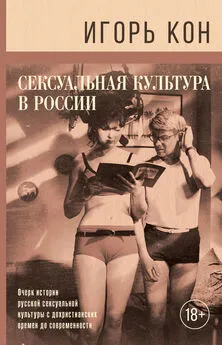Игорь Кон - Мальчик – отец мужчины
- Название:Мальчик – отец мужчины
- Автор:
- Жанр:
- Издательство:Время
- Год:2009
- Город:Москва
- ISBN:978-5-9691-0469-3
- Рейтинг:
- Избранное:Добавить в избранное
-
Отзывы:
-
Ваша оценка:
Игорь Кон - Мальчик – отец мужчины краткое содержание
Новая работа Игоря Кона развивает идеи, изложенные в его бестселлере «Мужчина в меняющемся мире». В конце XX в. человечество неожиданно обнаружило, что самым слабым звеном современного воспитания являются мальчики: они больше болеют, хуже учатся, чаще совершают преступления и рискованные поступки. Какова природа мальчишества как социокультурного явления? От чего зависят присущие или приписываемые мальчикам свойства? Всегда ли они одинаковы? Каково реальное положение мальчика в современной семье, школе и социуме? Каким он видит себя и свое тело? Как формируются и реализуются мальчишеские представления о мужественности? Каково приходится мальчикам, которые не могут или не хотят соответствовать предлагаемому нормативному канону? В каком направлении развивается современная гендерная педагогика? Обобщая данные мировых междисциплинарных исследований, ученый не дает педагогических рецептов, но его книга необходима каждому, кто готов думать над этими вопросами.
Мальчик – отец мужчины - читать онлайн бесплатно ознакомительный отрывок
Интервал:
Закладка:
Sexing the Grove: Popular music and Gender/WhitelyS., ed. L. Routledge, 1997.
Shapka J. D., Keating D. P. Structure and change in self-concept during adolescence // Canadian Journal of Behavioural Science. 2005. Vol. 37. P. 83–96.
Sharlip I. Circumcision and risk of HIV transmission in Africa // Journal of Sexual Medicine. 2008. Vol. 5. № 11. P. 2481–2485.
Sharpe L. L. Play does not enhance social cohesion in a cooperative mammal // Animal Behaviour. 2005. Vol. 70. P. 551–558.
Sharpe L. L. Play fighting does not affect subsequent fighting success in wild meerkats // Animal Behaviour. 2005. Vol. 69. P. 1023–1029.
Shea D. L., Lubinski D., Benbow C. P. Importance of assessing spatial ability in intellectually talented young adolescents: A 20-year longitudinal study // Journal of Educational Psychology. 2001. Vol. 93. P. 604–614.
Silverman W. K., Nelles W. B. The influence of gender on children's ratings of fear in self and same-aged peers // Journal of Genetic Psychology. 1987. Vol. 148. P. 17–21.
Simons-Morton В., Lerner N., Singer J. The observed effects of teenage passengers on the risky driving behavior of teenage drivers // Accident Analysis amp; Prevention. 2005. Vol. 37. P. 973–982.
Single-Sex Versus Coeducation Schooling: A Systematic Review – Final Report, 2005.
Smithers A., Robertson P. Single-sex education seems to make no difference to students' achievements: a review of available research concludes. http://news.bbc.co.Uk/go/pr/fr/-/l/hi/ education/5117500, stm.
Some Memories of Beatings at Eton College. http://www. archivist. f2s. com/cpa/written/Etonl. htm.
Sommers С. Н. The War Against Boys: How Misguided Feminism Is Harming Our Young Men. NY: Simon amp; Schuster, 2000.
Sourander A., Aromaa M., Pihlakoski L. et al. Early predictors of deliberate self-harm among adolescents: A prospective follow-up study from age 3 to age 15 // Soc Psychiatry Epidemiol. 2005. Vol.40. P. 912–921.
Sourander A., Jensen P., RonningJ. A. et al. What is the early adulthood outcome of boys who bully or are bullied in childhood? The Finnish «From a Boy to a Man» study // Pediatrics. 2007. Vol. 120. P. 397–404.
Sourander A., Helstela L., Haavisto A., Bergroth L. Suicidal thoughts and attempts among adolescents: A longitudinal 8-year follow-up study // J Affect Disord. 2001. Vol. 63. P. 59–66.
Spaaij R. Identity in football hooliganism. Men like us, boys like them: Violence, masculinity, and collective // Journal of Sport amp; Social Issues. 2008. Vol. 32. P. 369–392.
Species, a user's guide to young men, 2008 http://www. dis-coveryspecies. com/.
Spelke E. S. Sex differences in intrinsic aptitude for mathematics and science: A critical review // American Psychologist. 2005. Vol. 60. P. 950–958.
Spiegel A. Q amp;A: Doctors on Puberty-Delaying Treatments. 2008 // http://www.npr.org/templates/story/story.php? storyld=90234780.
Stanford J. N., McCabe M. P. Sociocultural influences on adolescent boys' body image and body change strategies // Body Image. 2005. Vol. 2. P. 105–113.
Stein R. Born to Be a Trader? Fingers Point to Yes: Study Cites Early Testosterone Exposure // Washington Post. January 13. 2009. P. A02.
Steinberg L. A social neuroscience perspective on adolescent risk-taking // Developmental Review. 2008. Vol. 28. P. 78– 106.
Steinberg L., Monahan К. С Age differences in resistance to peer influence // Developmental Psychology. 2007. Vol. 43. P. 1531–1543.
Stone L. The Family, Sex and Marriage in England. NY: Harper, 1979.
Straus M., Sugarman D., Giles-Sims J. Spanking by parents and subsequent antisocial behavior of children // Arch Pediatr AdolescMed. 1997. Vol. 151. P. 761–767.
Susman E. J., RogolA. Puberty and psychological development // Handbook of Adolescent Psychology. Second ed. / Ed. by R. M. Lerner, L. Steinberg. NY: Wiley, 2004. P. 15–44.
Symonds A. The Memoirs of John Addington Symonds: The Secret Homosexual Life of a Leading 19th Century men of Letters / Ed. and introduced by P. Grosscurth. NY: Random House, 1984.
Taga A., Markey C. N., Friedman H. S. A longitudinal investigation of associations between boys' pubertal timing and adult behavioral health and well-being // Journal of Youth and Adolescence. 2006. Vol. 35. P. 380–390.
Tamres L. K., Janicki D., Helgeson V. S. Sex differences in coping behavior: A meta-analytic review and an examination of relative coping // Personality and Social Psychology Review. 2002. Vol. 6. P. 2–30.
Teens and Social Media. Pew Internet amp; American Life Project 202-419-4500 http://www. pewinternet. org/
Terwilliger J. S., Titus J. C. Gender differences in attitudes and attitude changes among mathematically talented youth // Gifted Child Quarterly. 1995. Vol. 39. P. 29–35.
Thome B. Gender Play: Girls and Boys in School. New Brunswick, NJ: Rutgers University Press, 1994.
Trends in HIV– and STD-Related Risk Behaviors Among High School Students – United States, 1991–2007 // Morbidity and Mortality Weekly Report. August 1, 2008. Vol. 57. № 30.
Trzesniewski K. H., Donnellan M. В., Moffitt Т. Е. et al. Low self-esteem during adolescence predicts poor health, criminal behavior, and limited economic prospects during adulthood // Developmental Psychology. 2006. Vol. 42. P. 381–390
Tsolidis G., Dobson I. R. Single-sex schooling: Is it simply a 'class act'? // Gender and Education. 2006. Vol. 18. P. 213–228.
Tuvemo T, Jonsson В., Persson I. Intellectual and physical performance and morbidity in relation to height in a cohort of 18-year-old Swedish conscripts // Horm Res. 1999. Vol. 52. P. 186191.
Udry J. R. The National Longitudinal Study of Adolescent Health (Add Health), Waves I and II, 1994–1996; Wave III,
2001–2002 [Machine-readable data file and documentation]. Chapel Hill, NC: Carolina Population Center, University of North Carolina at Chapel Hill, 2003.
Ulph F., Betts P., Mulligan J., Stratford КJ. Personality functioning: The influence of stature // Arch. Dis. Child. 2004. Vol. 89. P. 17–21.
Van Bokhoven I., van Goozen S. H., van Engeland H. et al. Salivary testosterone and aggression, delinquency, and social dominance in a population-based longitudinal study of adolescent males //Horm Behav. 2006. Vol. 50. P. 118–125.
Van de Gaer E., Pustjens H., Van Damme J., De Munter A. Effects of single-sex versus co-educational classes and schools on gender differences in progress in language and mathematics achievement // British Journal of Sociology of Education. 2004. Vol. 25. P. 307–322.
Veenstra R., Lindenberg St., Bonne J. H. et al. The dyadic nature of bullying and victimization: Testing a dual-perspective theory // Child Development. 2007. Vol. 78. P. 1843–1854.
Vermeersch H., Sjoenb G. Т., Kaufman J. M., Vincke J. The role of testosterone in aggressive and non-aggressive risk-taking in adolescent boys// Hormones and Behavior. 2008. Vol. 53. P. 463–471.
Vincent L. 'Boys will be boys': Traditional Xhosa male circumcision, HIV and sexual socialization in contemporary South Africa // Culture, Health amp; Sexuality. 2008. Vol. 10. P. 431–446.
Voss L. D. Is short stature a problem? The psychological view // Eur J Endocrinol. 2006. Vol. 155. P. S39-S45.
Wallien M. S. C., Cohen-Kettenies P. T. Psychosexual outcome of gender dysphoric children // J. Am. Acad. Child and Adolesc. Psychiatry. 2008. Vol. 47. P. 1413–1423.
Wannamaker A. Men in cloaks and high-heeled boots, men wielding pink umbrellas: Witchy masculinities in the Harry Potter novels // The Looking Glass: New Perspectives on Children's Literature. 2006. Vol. 10. January.
Waugh A. The Loom of Youth. L.: The Richard's press, 1955.
Weber E. U., BlaisA., BetzE. N. A domain specific risk-attitude scale: Measuring risk perceptions and risk behaviors // Journal of Behavioral Decision Making. 2002. Vol. 15. P. 263–290.
Wetherill R. R., Fromme K. Alcohol use, sexual activity, and perceived risk in high school athletes and non-athletes // Journal of Adolescent Health. 2007. Vol. 41. P. 294–301.
Whiting В. В., Edwards С. Р. Children of Different Worlds: The Formation of Social Behavior. Cambridge, Mass.: Harvard University Press, 1988.
Whiting B. B, Whiting J. W. M. Children of Six Cultures: A Psycho-Cultural Analysis. Cambridge, MA: Harvard University Press, 1975.
Whitley В. Е. Gender differences in computer-related attitudes and behavior: A meta-analysis // Computers in Human Behavior. 1997. Vol. 13. P. 1–22.
WHO. What about boys? A literature review on the health and development of adolescent boys. Geneva: WHO, 2000.
Wilier R. Overdoing Gender: Paper presented at the annual meeting of the American Sociological Association. Marriott Hotel, Loews Philadelphia Hotel, Philadelphia, PA. Aug 12, 2005.
Willis P. Learning to Labour: How Working Class Kids Get Working Class Jobs / L.: Saxon House, 1977.
Wilson P. Perceptual distortion of height as a function of ascribed academic status // J. Soc. Psychol. 1968. Vol. 74. P. 97– 102.
Younger M. Warrington M., Gray J. et al. Raising Boys' Achievement. University of Cambridge Faculty of Education, 2005.
Yurgelun-Todd D. Emotional and cognitive changes during adolescence // Current Opinion in Neurobiology. 2007. Vol. 17. P. 251–257.
Youth Sexuality: Repeat survey of 14 to 17-years-olds and their parents. Commissioned by Bundeszentrale fuer gesundheitliche Aufklaerung. Bielefeld, 2006.
Zazzo В. Le sentiment de maturite chez l'adulte // Enfance. 1969. № 1–2. P. 1–44.
Zerle C. Die eigene Rolle finden: Wie junge Maenner sich Vatersein vorstellen // Deutsches Jugend Institut Bulletin. 2008. № 3–4. S. 10–12.
ZieglerA., FinsterwaldM., Grassinger R. Predictors of learned helplessness among average and mildly gifted girls and boys attending initial high school physics instruction in Germany // Gifted Child Quarterly. 2005. Vol. 49. P. 7–18.
Zimmer-Gembeck M. J., Helfand M. Ten years of longitudinal research on U. S. adolescent sexual behavior: Developmental correlates of sexual intercourse, and the importance of age, gender and ethnic background // Developmental Review. 2008. Vol. 28. P. 153–224.
Zucker K. J. On the «natural history» of gender identity disorder in children // Am. Acad. Child Adolesc. Psychiatry. 2008. Vol. 47. P. 1361–1363.
Zuckerman M. Sensation Seeking and Risky Behavior. Washington: American Psychological Assoc, 2007.
Комментарии
1
О происхождении и смысле этих понятий я подробно писал в других местах (см., например, Кон, 2009). Чтобы не утомлять читателя терминологическими нюансами, приведу определения нескольких базовых терминов из учебника социологии Энтони Гидденса (Гидденс, 1999). Эти определения не являются единственно возможными, но с ними можно работать.
Гендер – социальные ожидания относительно поведения, которое считается правильным для представителей определенного пола. Гендер касается не физических свойств, по которым мужчины отличаются от женщин, а социально сформированных черт маскулинности и фемининности.
Читать дальшеИнтервал:
Закладка:










